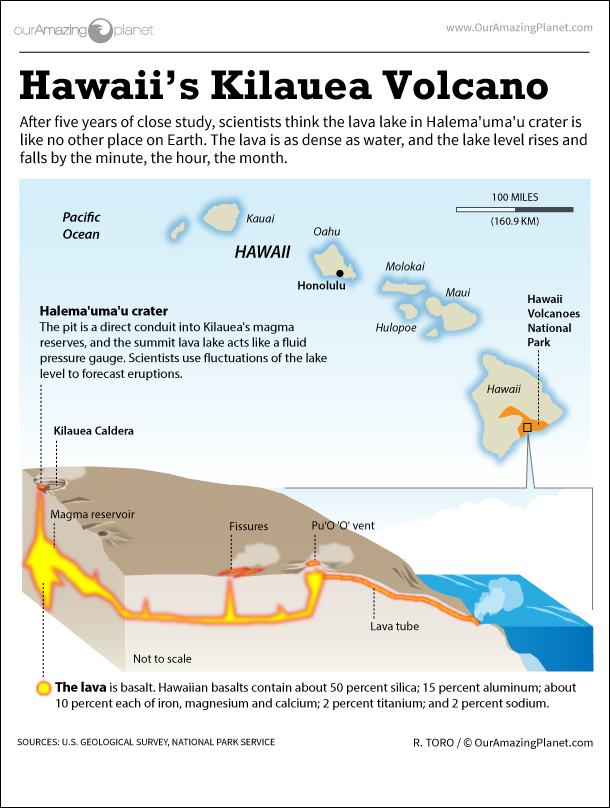How Hawaii's Kilauea Volcano Works (Infographic)

One of the world's most active volcanoes, Kilauea is a shield-type volcano on the Big Island of Hawaii. Kilauea has been erupting continuously since 1983.
Kilauea rises to 4,190 feet (1,227 meters) above sea level. The summit caldera contains a lava lake called Halema'uma'u, said in legend to be the home of the volcano goddess Pele.
After five years of close study, scientists think the lava lake in Halema'uma'u crater is like no other place on Earth. The lava is as dense as water, and the lake level rises and falls by the minute, the hour, the month.
The pit of Halema'uma'u crater is a direct conduit into Kilauea's magma reserves, and the summit lava lake acts like a fluid pressure gauge. Scientists use fluctuations of the lake level to forecast eruptions.
The lava is basalt. Hawaiian basalts contain about 50 percent silica; 15 percent aluminum; about 10 percent each of iron, magnesium and calcium; 2 percent titanium; and 2 percent sodium.
Sign up for the Live Science daily newsletter now
Get the world’s most fascinating discoveries delivered straight to your inbox.

